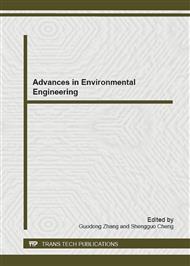p.188
p.192
p.202
p.206
p.211
p.216
p.220
p.224
p.229
An Optimal Model for Low-Carbon Urban Agglomeration Based on Energy Structure Reduction under Uncertainty
Abstract:
This paper developed an optimal model of low-carbon urban agglomeration on the base of energy structure under uncertainty. The case study shows that the carbon intensity was decreased by [32.19, 41.20] (%) and energy intensity was reduced by [34.08, 43.19] (%) compared with those in 2010; meanwhile, the carbon intensity and energy intensity in the core area was reduced by [50.88, 54.11] (%) and [51.24, 54.57] (%) respectively, compared with those in 2010. The optimized scheme could not only meet the requirements of 12th Five-Year Planning Outline of Controlling Greenhouse Gas Emission, but also complied with the requirements of regional planning targets. The established model also provided more decision-making space for the sustainable development of low-carbon urban agglomeration.
Info:
Periodical:
Pages:
211-215
Citation:
Online since:
November 2012
Authors:
Keywords:
Price:
Сopyright:
© 2012 Trans Tech Publications Ltd. All Rights Reserved
Share:
Citation:


